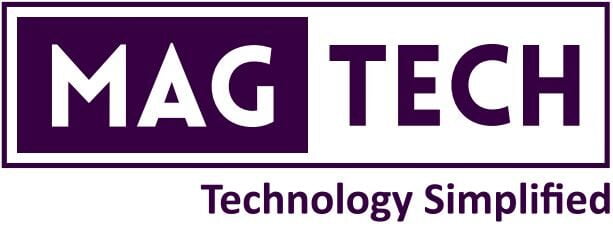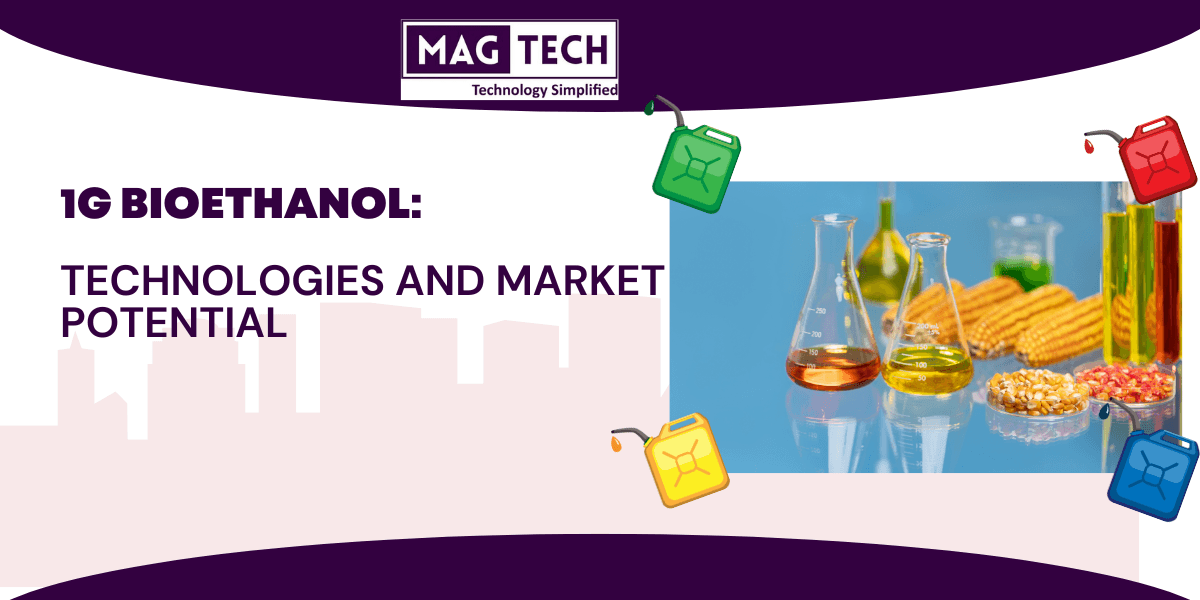India stands at a crucial juncture in its energy journey. As we inch closer to achieving our national target of 20% ethanol blending in petrol by 2025, a quiet revolution is taking place across industries, farms, and fuel stations around the country. It’s not often that a single initiative addresses multiple national priorities at once, but ethanol has managed to do just that.
At MAGTECH, we’ve spent the past decade watching the bioethanol landscape transform from a niche alternative to a mainstream necessity. The numbers tell the story better than we ever could: since 2014, India has saved approximately ₹1 lakh crore in precious foreign exchange by substituting 181 lakh metric tonnes of crude oil with ethanol blends. That’s not just an economic achievement—it represents a significant step toward energy independence.
Table of Contents
ToggleThe Quiet Revolution in India’s Energy Sector
When India’s Ethanol Blended Petrol (EBP) Program began gaining serious momentum a few years ago, many dismissed it as just another government initiative that would fade with time. Today, those skeptics have been silenced as ethanol blending rates approach 20% nationwide.
The transformation has been remarkable. Ethanol production capacity has more than doubled in just four years, reaching 1,623 crore litres as of September 2024. This growth isn’t accidental—it’s the result of deliberate policy choices, industrial adaptation, and changing attitudes toward sustainable energy.
What’s particularly encouraging is how this shift is benefiting rural India. Since 2014, oil marketing companies have paid ₹87,558 crore directly to farmers, creating new revenue streams in agricultural communities that desperately need economic stability. When a sugarcane farmer in Maharashtra or Uttar Pradesh gets a fair price for crops that go into ethanol production, the impact ripples through entire village economies.
Why More Industries Are Making the Switch
The appeal of ethanol goes far beyond government mandates. Companies across sectors are discovering tangible benefits that directly impact their bottom line and long-term sustainability.
Breaking Free from Oil Import Dependency
India imports nearly 85% of its crude oil needs, making our economy vulnerable to price fluctuations and geopolitical tensions in oil-producing regions. Every percentage point increase in ethanol blending represents millions of barrels of oil that don’t need to be imported.
For businesses that rely heavily on transportation or use petroleum products as inputs, this translates to greater price stability and reduced exposure to international commodity markets. A food processing company that operates a large fleet of delivery vehicles, for instance, can better predict fuel costs when those costs are partially decoupled from global oil prices.
The manufacturing sector, which has been particularly vulnerable to energy price volatility, stands to gain significantly. When oil prices spike, as they did in 2022 following geopolitical tensions, companies with ethanol in their energy mix experienced less severe cost increases.
The Environmental Equation Makes Business Sense
The EBP programme has cut CO2 emissions by an impressive 544 lakh metric tonnes since 2014. For companies increasingly scrutinized for their environmental impact, incorporating ethanol offers a relatively straightforward way to reduce their carbon footprint.
This isn’t just about environmental responsibility, though that matters enormously. It’s also about preparing for a future where carbon taxes, emissions trading schemes, and consumer preferences for green products will likely reshape market dynamics. Forward-thinking businesses are positioning themselves accordingly.
Moreover, many industries are finding that ethanol’s environmental benefits extend beyond carbon emissions. It burns cleaner than conventional fuels, reducing particulate matter and improving air quality around industrial facilities. For manufacturing plants located in or near urban areas, this can mean better relations with neighboring communities and fewer regulatory complications.
Rural Economic Development Creates New Markets
Perhaps the most overlooked benefit of ethanol adoption is how it’s transforming rural economies. When ethanol plants are established in agricultural regions, they create jobs not just in the facility itself but throughout the supporting infrastructure.
Smart businesses recognize that rural prosperity translates to new consumer markets. As farming communities benefit from selling crops for ethanol production, their purchasing power increases. Companies that establish early relationships with these communities—whether as suppliers, partners, or service providers—are positioning themselves to grow alongside these emerging markets.
In states like Maharashtra, Uttar Pradesh, and Karnataka, where sugarcane farming supports millions of livelihoods, ethanol production has become a crucial economic stabilizer, reducing dependence on fluctuating sugar prices and creating year-round employment opportunities.
Beyond Fuel: Ethanol’s Diverse Applications
While fuel blending remains the most visible use of ethanol in India, innovative companies are finding new applications across sectors.
Transportation Transformation
The automotive industry is perhaps experiencing the most dramatic ethanol-driven evolution. In 2024, India launched E100 fuel with an octane rating of 100-105, creating new possibilities for high-performance engines. Major manufacturers are now developing flex-fuel vehicles (FFVs) specifically designed to run efficiently on higher blends.
This shift requires suppliers, component manufacturers, and service providers to adapt. Companies that can provide specialized parts, maintenance expertise, or technology solutions for ethanol-compatible vehicles are finding growing demand for their offerings.
Chemical Manufacturing Gets Greener
Chemical manufacturers have discovered that ethanol makes an excellent renewable solvent for many industrial processes. Traditional petroleum-based solvents can now be replaced with bioethanol, reducing both environmental impact and dependence on imported petroleum products.
This transition is particularly valuable for companies producing paints, coatings, cleaning agents, and personal care products. Consumers increasingly prefer products made with renewable ingredients, and regulatory frameworks increasingly favor them as well.
One pharmaceutical company we worked with recently switched to ethanol-based extraction processes for certain plant-derived medicines, simultaneously reducing their carbon footprint and improving the purity of their final product. The initial investment in retooling their process was recovered within 18 months through improved efficiency and premium pricing for their “greener” medicine.
Food and Beverage Industry Synergies
The connections between ethanol and the food and beverage sector run deep. Beyond the obvious use in alcoholic beverage production, food processing companies are finding that integration with ethanol production can create valuable synergies.
Food waste—a persistent challenge in India’s food supply chain—can be converted to ethanol, turning a disposal problem into a revenue opportunity. Companies that process fruits, vegetables, or grains are particularly well-positioned to benefit from these approaches.
Scouting Implementation Challenges
Despite its promise, ethanol adoption isn’t without hurdles. Understanding these challenges is the first step toward overcoming them.
Balancing Food and Fuel Needs
The “food versus fuel” debate remains relevant, particularly as India became a net importer of corn in 2024 after decades of being a corn exporter. This shift was partly driven by increased maize demand for ethanol production.
Forward-thinking businesses are addressing this concern by investing in second-generation (2G) ethanol technologies that utilize agricultural residues rather than food crops. These approaches maintain the benefits of ethanol while avoiding competition with food production.
Water Management Solutions
Sugarcane-based ethanol production requires significant water resources—approximately 2,860 liters of water per liter of ethanol, according to Niti Aayog. In water-stressed regions like Maharashtra, this presents a serious sustainability challenge.
Industry leaders are implementing water recycling systems, precision irrigation techniques, and drought-resistant crop varieties to address this issue. Some are also exploring alternative feedstock with lower water requirements, such as sweet sorghum or cassava.
Infrastructure and Distribution Challenges
Inadequate ethanol storage facilities, blending infrastructure, and interstate transportation barriers have slowed ethanol adoption in some regions. Despite recent amendments to the Industries Development and Regulation Act to facilitate the free movement of ethanol across states, implementation challenges persist.
Companies that can provide solutions to these infrastructure gaps—storage tanks, specialized transport equipment, or blending technologies—are finding eager customers among fuel distributors and industrial ethanol users.
How Your Business Can Join the Ethanol Revolution
Regardless of your industry, there are practical steps you can take to benefit from India’s ethanol transition.
Start With an Energy Audit
Before making any major changes, understand your current energy usage patterns and identify where ethanol could make the most impact. This might be in your vehicle fleet, manufacturing processes, or product formulations.
A comprehensive energy audit will reveal not just where ethanol substitution makes sense, but also where complementary efficiency improvements could multiply your benefits.
Explore Government Incentives
India’s push toward ethanol adoption comes with significant government support. The Pradhan Mantri JI-VAN Yojana provides financial assistance for commercial-scale second-generation projects. GST has been lowered to 5% for ethanol, and interest subvention schemes are available for expanding production capacity.
These incentives can substantially improve the economics of ethanol-related investments, often turning marginally profitable projects into compelling opportunities.
Form Strategic Partnerships
Few companies possess all the expertise needed to fully capitalize on ethanol opportunities. Partnerships—with technology providers, feedstock suppliers, or distribution networks—can accelerate your transition while managing risks.
For instance, a food processing company might partner with an ethanol producer to convert its organic waste streams into fuel, creating a circular economy model that benefits both parties.
Invest in Workforce Development
Any significant operational change requires people who understand the new technologies and processes. Investing in training programs for your technical staff ensures smoother implementation and better long-term results.
This is particularly important for maintenance teams handling ethanol-compatible equipment, laboratory staff analyzing ethanol quality, or process engineers optimizing ethanol-based manufacturing.
The Time to Act Is Now: Partner With MAGTECH
India’s ethanol journey has reached a critical mass. With blending rates approaching 20% and production capacity continuing to expand, we’ve moved beyond the question of whether ethanol will play a major role in our energy future. The only questions remaining are how quickly the transition will occur and which companies will seize the opportunities it presents.
For businesses across sectors, it represents not just an alternative fuel or input material but a strategic opportunity to reduce costs, enhance sustainability, and position for long-term success in this dynamic economic environment.
MAGTECH, in this aspect, offers full professional assistance to chalk out a turnkey solution for ethanol production and utilize this business scope to diversify your business portfolio. Contact us today for a free consultation.


